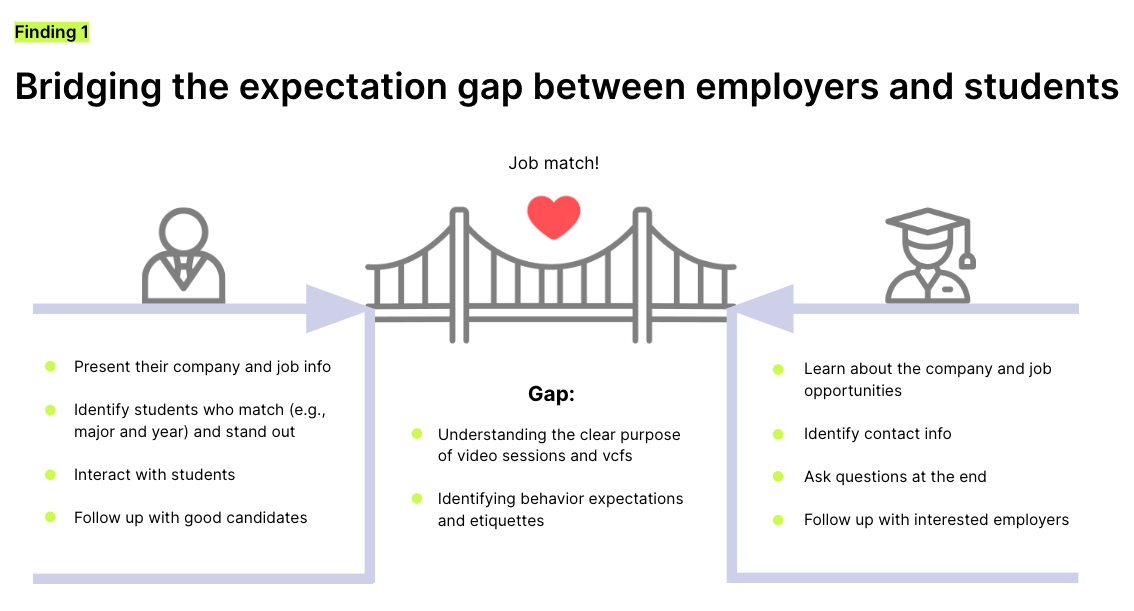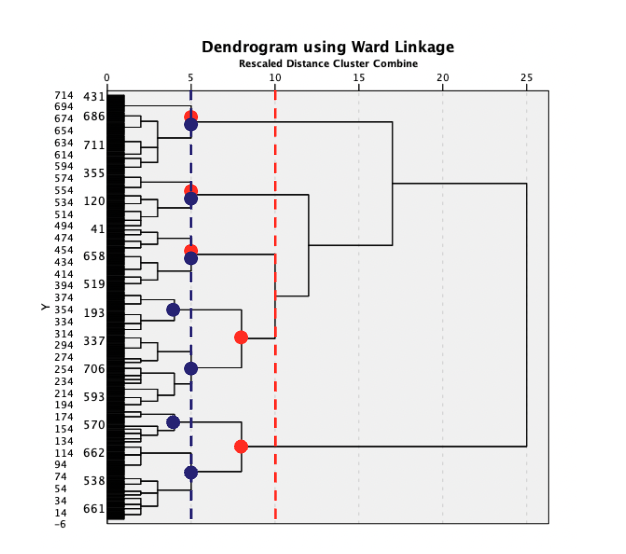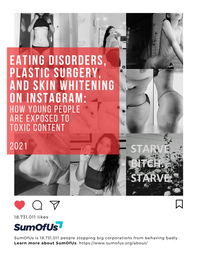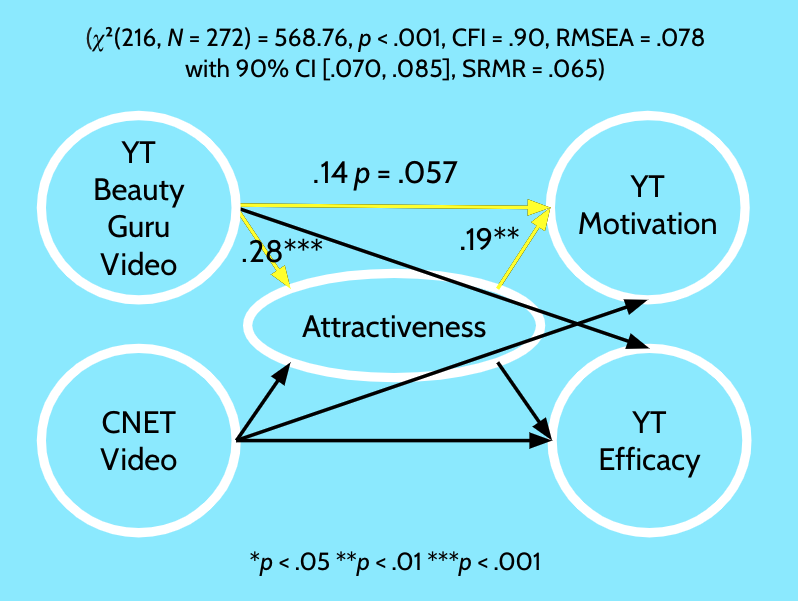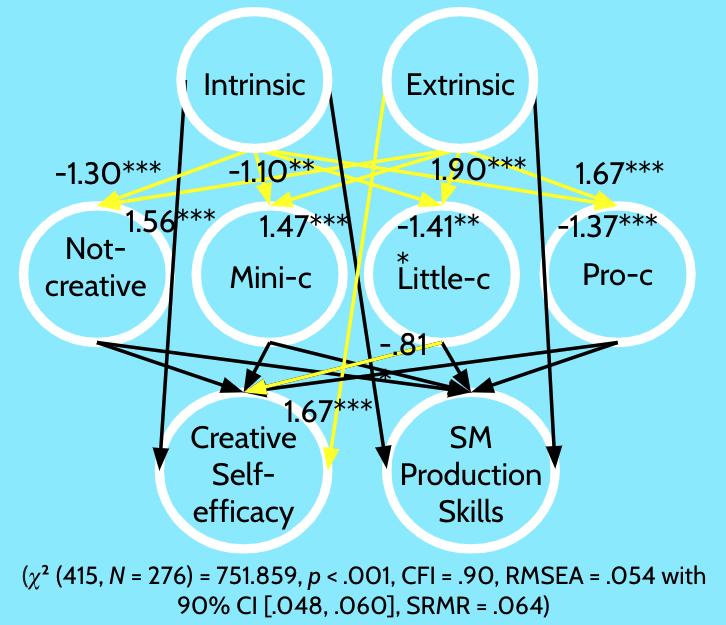research case studies
UX Research: User Live Video experience (2022)
|
The bridge gap diagram shows the expectation difference between employers and students attending virtual career fairs (click to enlarge).
|
WHY: Quantitative data showed that there were numerous ticketed issues with the video function on the platform. We needed qualitative context to deeply understand our users’ live video experience and pain points that can strengthen virtual interactions between all users.
HOW: As a Senior UX Researcher, I conducted interviews with three different types of users: Edu partners (N = 7), employers (N = 6), and students (N = 6). The qualitative data were synthesized to identify common themes. HIGHLIGHTED FINDINGS:
|
UX Research: Core Student User Archetypes (2022)
|
WHY: We needed to understand the needs, motivations, and pain points of our core segment of student users who are most active/engaged on our platform.
HOW: As a Senior UX Researcher, I led my team to conduct two research projects where we conducted interviews (N = 11) and a survey (N = 712). The qualitative data were synthesized to develop hypotheses for archetype patterns. After, hierarchical and k-mean cluster analyses were ran on SPSS to produce final archetypes. HIGHLIGHTED FINDINGS:
|
Hierarchical cluster analysis to identify significant cluster numbers (click to enlarge).
|
EATING DISORDER, PLASTIC SURGERY, AND SKIN WHITENING CONTENT ON INSTAGRAM (2021)
|
Trigger warning for sensitive topics and images.
To see the complete data report, click here! |
WHY: Numerous past research indicated that Instagram is negatively impacting young users, especially girls and young women. With the Wall Street Journal's recent internal report on this topic, there needs to be further efforts to identify harmful content on Instagram.
HOW: As a research consultant for SumOfUs, I led a team of coders to conduct a content analysis (N = 720) of Instagram posts. Descriptive statistics were ran on SPSS to identify the highest percentages for different variables. HIGHLIGHTED FINDINGS:
|
women BEAUTY YouTubers as Tech influencers (2017)
|
WHY: One of the most influential content creators are beauty YouTubers. While many people can understand their beauty impact, not many can recognize how they are also self-taught technology users who has exceptional video production skills. Beauty YouTubers, especially women, should be explored further as technology leaders and educators who can diversify the technology field.
HOW: As a lead researcher, I conducted a 2-part study: content analysis (N = 102) and experiment (N =272) using a convenient sample. Descriptive statistics and structural regression model were ran using SPSS AMOS to identify significant pathways. HIGHLIGHTED FINDINGS:
|
motivation and creativity levels ON SOCIAL MEDIA (2017)
|
The relationship between the creativity level of social media (click to enlarge).
To read more, click here! |
WHY: It takes immense creativity to use and produce content on social media. However, there is a lack of emphasis on understanding on how and why creativity matters on social media. Creativity can be further examined in terms of motivation to examine young social media producers' potentials.
HOW: For my dissertation, I conducted a survey (N = 545) from a sample of social media content creators. A structural regression model was created using SPSS AMOS to identify the relationships between variables. TOP FINDINGS:
|
Women DIGITAL MUSICIANS ON SOCIAL MEDIA (2015)
|
WHY: While there is an existing stereotype that women are less skilled at using technology, there are many female digital musicians who are using both musical and technology skills to thrive online. These women's journeys are valuable to understand women's relationship with technology.
HOW: As a solo researcher, I conducted 1-1 phone and Skype semi-structured interviews with an international sample (N = 17) women digital musicians from YouTube, SoundCloud, and Vine. The interview transcriptions were synthesized to identify their common experiences/stories. HIGHLIGHTED FINDINGS:
|

